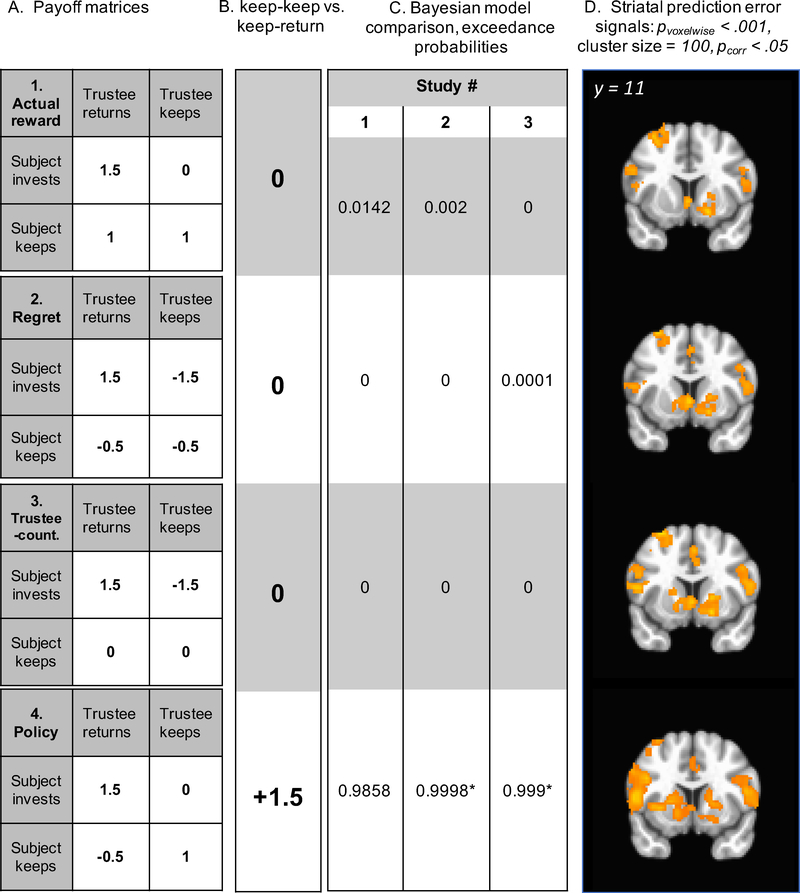Figure 2.
(A) Payoff matrices by model; (B) difference between correctly anticipated (keep/keep) and incorrectly anticipated trustee defection (keep/retum) shaping predicted striatal learning signal time course on those trials, (C) exceedance probabilities from the Bayesian model comparison, (D) neural responses in ventral striatum to model-derived prediction errors (PE) (pVOXeiwise< 001, cluster size = 100 voxels, pcorr < .05). 1) Actual-rewards model: actual rewards in the task; 2) Regret model: difference between actual rewards and the maximum outcome ($1.5); 3) Trustee-counterfactual model: difference between actual rewards and would-be outcome from trustee’s alternative action; 4) Policy model (best model): difference between actual rewards and would-be outcome from subject’s alternative action. * indicates that results withstand correction for the Bayesian omnibus error rate.

